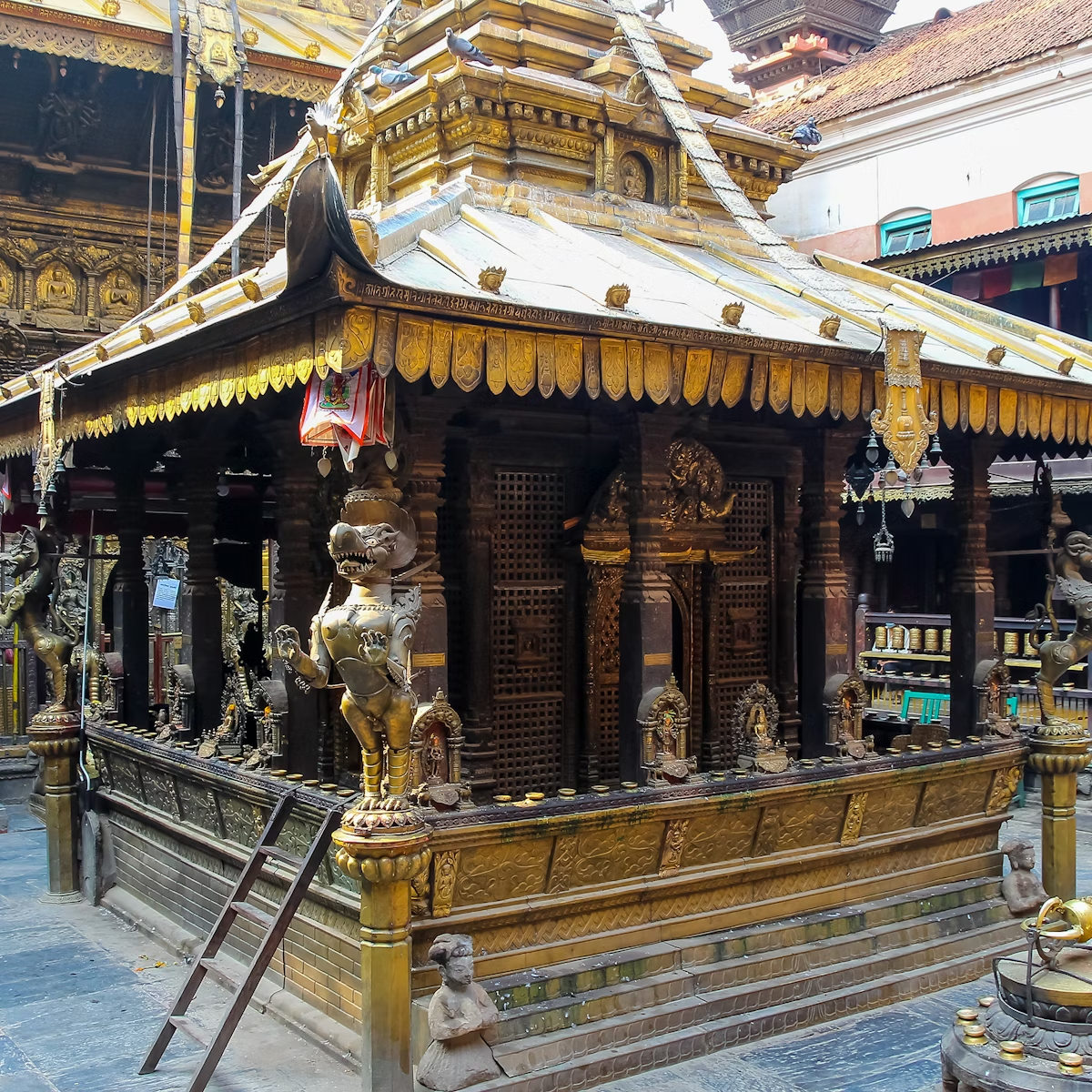Forming the entire eastern side of Durbar Sq, the Royal Palace of Patan was originally built in the 14th century, and expanded during the 17th and 18th centuries by Siddhinarsingh Malla, Srinivasa Malla and Vishnu Malla. The Patan palace predates the palaces in Kathmandu and Bhaktapur and remains one of the architectural highlights of Nepal.
Behind the extravagant facade, with its overhanging eaves, carved windows and delicate wooden screens, are a series of connecting courtyards and a trip of temples dedicated to the valley’s main deity, the goddess Taleju. The closed external Bhairab gateway leading to the central Mul Chowk courtyard is flanked by two stone lions and colourful murals of Shiva in his wrathful incarnation as Bhairab. Strings of buffalo guts are hung above the door in his honour.
The northern courtyard is reached through the Golden Gate (Sun Dhoka). Installed in 1734, this finely engraved and gilded gateway is topped by a golden torana showing Shiva, Parvati, Ganesh and Kumar (an incarnation of Skanda, the god of war). Directly above the gateway is a window made from gold foil wrapped around a timber frame, where the king once made public appearances. This gateway now forms the entrance to the Patan Museum and northern ticket office.
Restoration works following the 2015 earthquake are not the first to take place at the palace. Reconstruction followed the conquest of the valley by Prithvi Narayan Shah in 1768, and again after the great earthquake of 1934.








